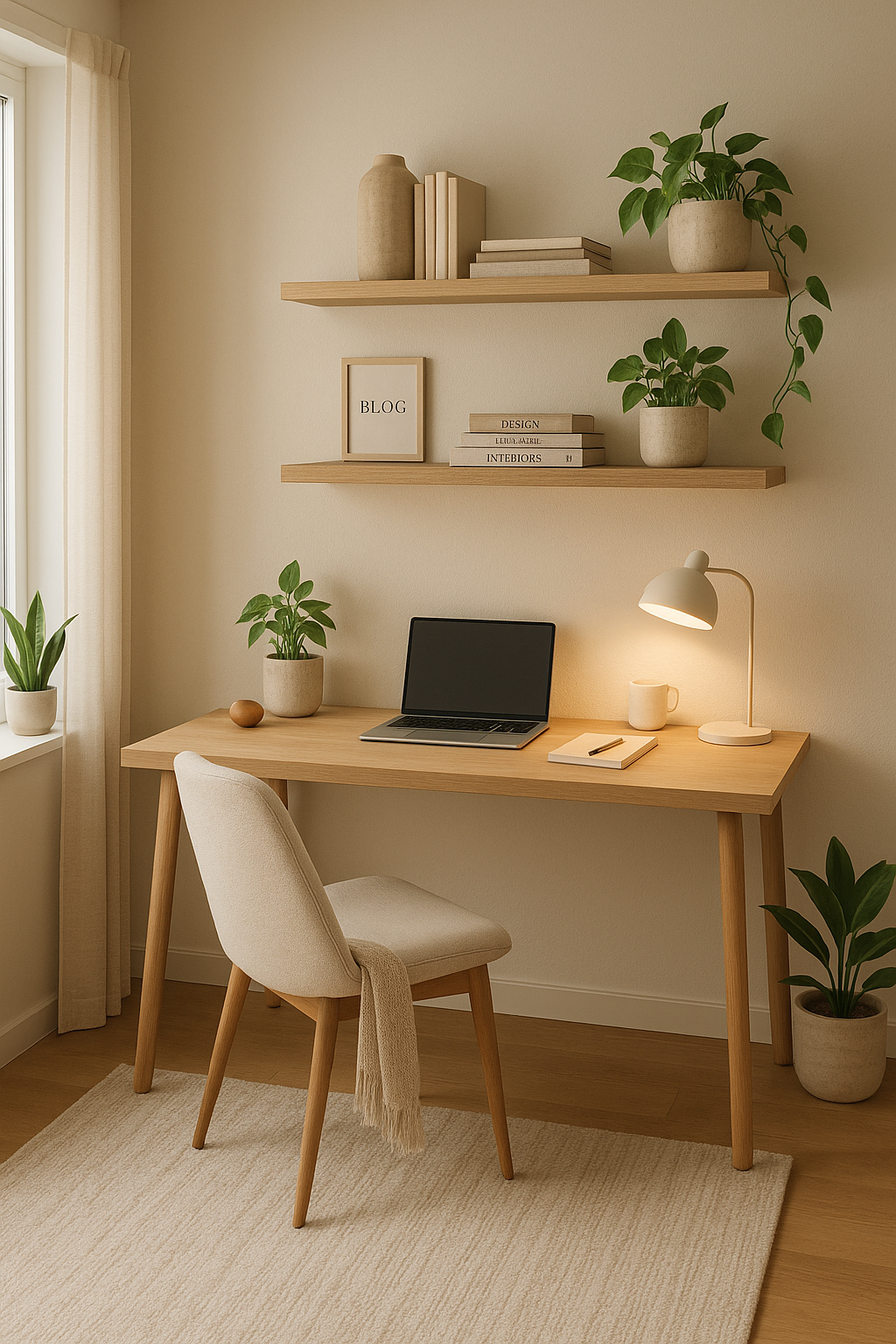When floor space is limited, shelves become essential—not just for storage, but also for organization, style, and productivity. In a small home office (especially one that shares space with a bedroom, kitchen, or living area), the way you use shelves can make or break your workspace’s functionality and aesthetic.
In this guide, we’ll explore how to use shelves creatively in your office—whether it’s a full room, a hallway nook, or a corner of your living room.
1. Turn Shelves into a Functional Focal Point
Shelves don’t have to hide in the background—they can become the visual anchor of your office.
Try:
- A full wall of floating shelves behind your desk
- Color-coordinated books and accessories
- Layered art and framed photos for personality
- Use baskets and boxes in matching tones for a clean look
Make your shelves the “backdrop” of your Zoom calls with intentional styling.
2. Maximize Vertical Wall Space
Even the smallest office has walls—use them fully!
Ideas:
- Install shelves above your desk instead of using a bulky cabinet
- Go vertical from floor to ceiling to take advantage of unused space
- Stack cube-style or ladder shelves in a corner to create height
This opens up valuable desk surface while keeping important items within reach.
3. Use a Shelf as a Desk
In ultra-small offices, a single deep shelf can replace an entire desk.
How:
- Mount a sturdy wood or laminate shelf at desk height
- Pair it with a slim chair or stool
- Add a power strip underneath for a clean setup
This floating solution frees up floor space and looks sleek—ideal for minimalist or Scandinavian-style offices.
4. Mix Open and Closed Storage
Balance is key. Too many open shelves can feel cluttered; too many closed ones might feel heavy.
The fix:
- Alternate open shelves with closed bins, baskets, or drawer units
- Use a curtain or fabric panel to conceal one shelf row
- Keep daily-use items visible and everything else tucked away
This keeps the look clean while staying practical.
5. Add Lighting to Your Shelves
Well-lit shelves feel polished and professional.
Lighting ideas:
- LED strip lights under each shelf
- Clip-on lamps for task areas
- Battery-powered puck lights inside shadow boxes
Lighting highlights what’s important and adds ambiance to the workspace—especially helpful in dark corners or closets-turned-offices.
6. Style Shelves with a 60/30/10 Formula
Use this simple visual formula:
- 60% practical storage (books, binders, baskets)
- 30% decorative (plants, photos, small art)
- 10% empty space (breathing room)
This balance keeps shelves useful but visually light and inspiring.
7. Use Corner Shelves to Maximize Space
Corners often go unused—but they’re perfect for shelving.
Options:
- Triangular floating shelves
- Standing corner bookshelves
- DIY cube shelves stacked into a V-shape
Corner shelves are perfect for decorative items, vertical file sorters, or even a tiny coffee station.
8. Create a Vertical Command Center
If your office shares space with a living or dining area, use wall shelves to create a command center.
Include:
- A calendar or corkboard
- Document trays or mail sorters
- Charging stations
- A small shelf for keys or office tools
Add hooks or a shelf-mounted drawer to keep everything organized and out of the way.
9. Make a Mini Library Above Your Desk
If you’re a reader, a shelf-based mini library is both functional and beautiful.
Tips:
- Install 2–3 narrow floating shelves above your desk
- Stack books horizontally and vertically
- Use bookends, small plants, or framed prints to break up rows
Books add warmth and substance to your office—without taking up desk space.
10. Add a Shelf Ladder for Decor and Storage
A leaning shelf ladder is a stylish, easy-to-move option for renters and small homes.
Use it to:
- Store notebooks or sketchpads
- Display plants and photos
- Hold office bins, paper trays, or small speakers
Its narrow profile and vertical design make it ideal for hallways or corners.
11. Incorporate Wall-Mounted Drawers
Shelves aren’t just for open display—you can add functionality by mounting drawer units or boxes beneath them.
Use these for:
- Cables and chargers
- Stationery
- Receipts and documents
- Tech accessories
It’s a clean, modern solution that replaces bulky file cabinets.
12. Use Modular Shelving Systems
Modular units like IKEA’s EKET or KALLAX, or Elfa wall systems, are flexible and renter-friendly.
Benefits:
- Customize based on available space
- Easy to change as your needs evolve
- Combine open and closed units
They work great for wall-to-wall storage or under-window shelving in home offices.
13. Floating Shelf Above the Monitor
Use a narrow floating shelf just above your screen to store:
- Reference books
- Notebooks or sticky notes
- Headphones on a hook
- Decorative elements to personalize the zone
This keeps your workspace clear and your essentials visible.
14. Design a Shelf-Based Divider
In studio apartments or open-plan homes, use a wide shelf unit as a divider between your office and living space.
Choose:
- Open shelving to allow light through
- Bins or boxes on the lower levels
- Books and plants at eye level for interest
It divides the room while adding utility and style.
15. Make It Mobile with Rolling Shelf Carts
Add wheels to a narrow shelf or use a rolling utility cart to:
- Create a mobile office organizer
- Move your tools or printer where needed
- Store craft or project supplies
Perfect for apartments where workspaces need to reset quickly at the end of the day.
Shelves are one of the most powerful tools in your home office—especially when space is limited. With the right strategy, they can store, organize, divide, decorate, and even replace furniture.
Whether you’re creating a minimalist workspace, a creative studio, or a tucked-away corner office, smart shelving lets you make the most of your vertical space and keep your work life running smoothly.

